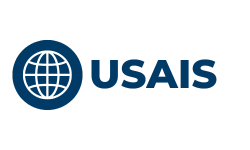FAQs
Frequently Asked Questions ?
Here you’ll find answers to some of the most commonly asked questions about our services, processes, and policies. If you have any other questions, please feel free to reach out to us directly.

FAQs
Frequently Asked Questions ?
Here you’ll find answers to some of the most commonly asked questions about our services, processes, and policies. If you have any other questions, please feel free to reach out to us directly.
The L-1 visa is available to employees of international companies who are being transferred to a U.S. office. To be eligible, the applicant must have worked for the foreign company for at least one continuous year within the three years preceding their application and must be coming to the U.S. to work in a managerial, executive, or specialized knowledge capacity.
An H-1B visa holder can stay in the U.S. for a maximum of six years, initially granted for three years with an extension of up to three more years. Extensions beyond six years are possible under the American Competitiveness in the Twenty-First Century Act (AC21), such as if the visa holder is applying for permanent residency, has an approved I-140 petition, or a pending labor certification filed at least 365 days before reaching the six-year limit.
Obtaining a U.S. Green Card can be achieved through various pathways, such as family sponsorship, employment-based categories, the Diversity Visa Lottery, and asylum or refugee status. Family sponsorship is the fastest for immediate relatives like spouses and parents, while employment-based options include extraordinary abilities, advanced degrees, skilled workers, and job-creating investors.
The length of stay in the U.S. with a temporary visa varies by type. Tourist (B-2) and business (B-1) visas allow up to six months, as set by Customs and Border Protection. Student (F-1) visas cover the study period and practical training. Work visas like H-1B last up to three years, extendable to six. L-1 visas are valid for up to seven years for managers and five years for specialized workers. Extensions depend on visa rules.
To obtain a U.S. work permit (EAD), eligible individuals must determine their eligibility based on their immigration status, submit Form I-765 with supporting documents and the application fee to USCIS, and possibly attend a biometrics appointment. Upon approval, they receive the EAD, allowing them to work legally in the U.S. for one to two years, with renewal options.
Indians can obtain an O-1 visa if they demonstrate extraordinary ability in fields like sciences, arts, business, or athletics. Applicants must provide evidence such as awards or critical employment. The process involves submitting Form I-129 and required documentation to USCIS. Upon approval, they can work in the U.S. in their field of expertise.
To obtain U.S. citizenship through naturalization, individuals must be Green Card holders for at least five years (or three if married to a U.S. citizen), be 18 or older, have continuous residence, demonstrate good moral character, and know English and U.S. civics. They submit Form N-400 to USCIS, attend a biometrics appointment, pass an interview and tests, and take the Oath of Allegiance at a naturalization ceremony.
The length of stay in the U.S. with a temporary visa varies by visa type. Tourist (B-2) and business (B-1) visas generally allow up to six months, as determined by a Customs and Border Protection officer. Student (F-1) visas are valid for the study program duration, plus practical training time. Work visas like H-1B are initially up to three years, extendable to six years, while L-1 visas last up to seven years for managers and five years for specialized workers. Extensions and status changes depend on visa-specific rules.
To obtain a U.S. work permit, individuals must determine eligibility based on their immigration status, such as a pending asylum application or temporary protected status. They must file Form I-765, Application for Employment Authorization, with the U.S. Citizenship and Immigration Services (USCIS), providing evidence of eligibility. The process includes paying a fee (with some exemptions), possibly attending a biometrics appointment, and waiting for USCIS processing. Upon approval, they receive an Employment Authorization Document (EAD), allowing legal work in the U.S. for one to two years, with renewal possible.
The B-1 visa is a non-immigrant visa for individuals entering the United States temporarily for business activities. It allows travelers to attend meetings, negotiate contracts, participate in training, or settle an estate but does not permit employment. B-1 visa holders can usually stay in the U.S. for up to six months, with the duration determined by a Customs and Border Protection officer at entry. This visa requires proof of ties to the home country and financial means to support oneself during the stay.
To provide transparent, efficient, and hassle-free immigration services to individuals and businesses seeking to enter the United States, ensuring a seamless and honest process free from fraud.
To be the leading trusted partner for all immigration needs, offering a smooth and straightforward pathway into the United States, avoiding unnecessary complexities and ensuring a secure and ethical journey.
Your Immigration, Our Priority: Simplifying the Process, Ensuring Integrity.
Top Immigration Service Provider
Our experienced team is here to guide you through every step, making the process easy and hassle-free. From visa applications to legal assistance, we provide tailored solutions to meet your unique needs.
